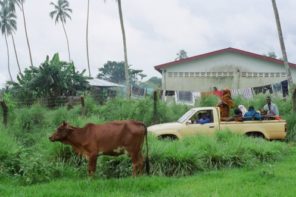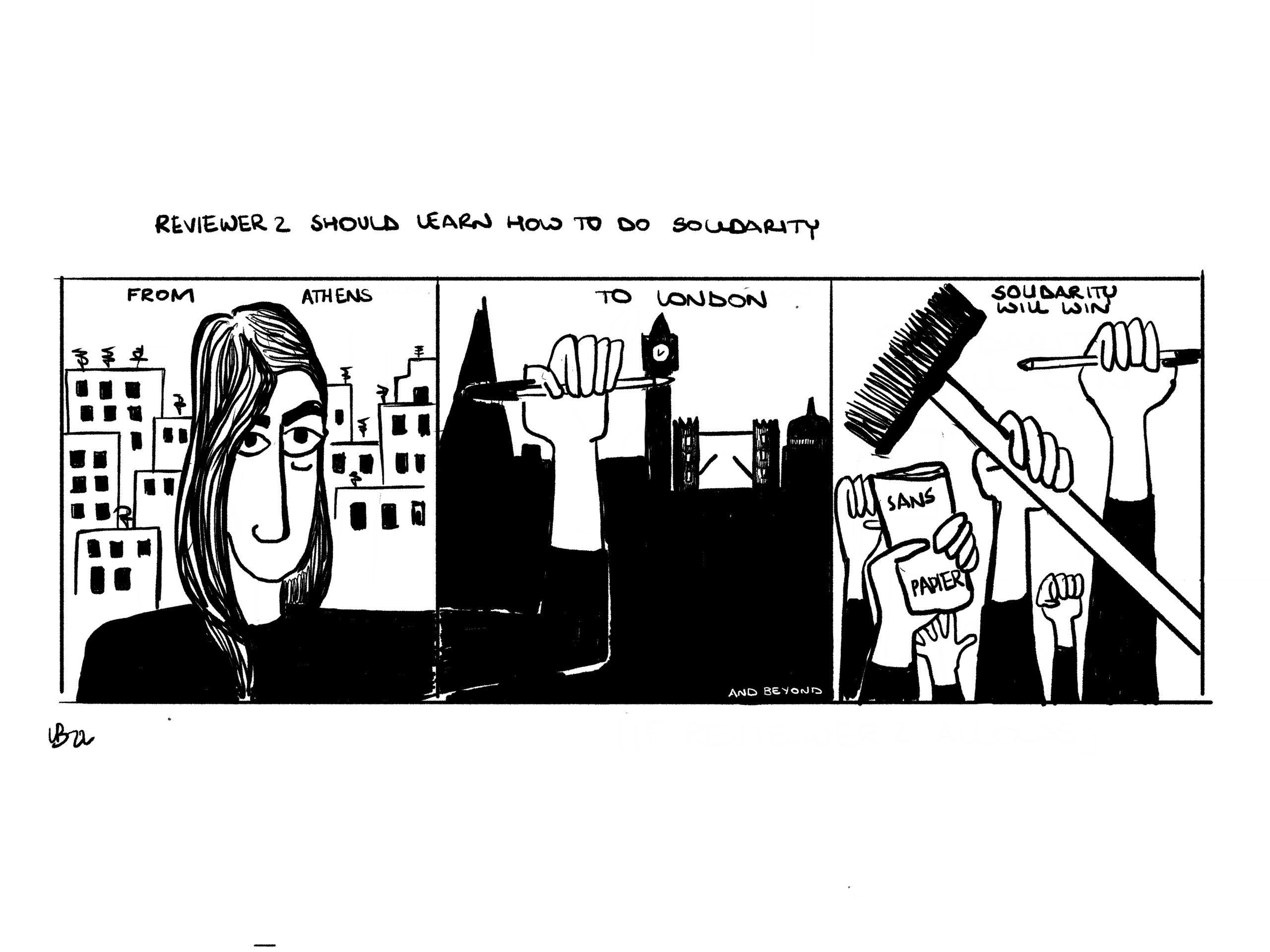Brega, a village in Odessa province, Ukraine, has not always been a ‘remote’ place. During Soviet times, it was part of a thriving agricultural district, with the nearby port towns of Reni and Izmail, on the Danube River, acting as a market hub for local produce. With the thousands of tonnes of cargo and high numbers of passengers moving through daily, these port towns were important gateways that connected Brega and the entire district with the rest of the Soviet Union.
Those days are now long past. The fortunes of the district, and the village in particular, have undergone a drastic turnaround since the collapse of the USSR in 1991.
The port towns today operate at only a small fraction of their capacity. The huge cranes on the docks stand like rusty dinosaurs, monuments to a bygone era. Evidence of the decline is everywhere: the main road that connects this region to the provincial capital of Odessa, some 300 km away, is riddled with craters and potholes so large and deep that in certain places cars can barely pass; untended gardens and deserted fields are a testimony to the vast number of people leaving the region in search of work.
Remoteness is due not only to poor communications and transport links to the rest of the country; it is also economic. The end of the Soviet-era agricultural collectives created massive unemployment. While 95 percent of Brega’s working population had been employed by the collectives, the new cooperatives that were formed in their place took on only a minute proportion of this workforce, leaving the vast majority – over 90 percent of the original collective labour force – without work. Hardest hit were the unskilled or less skilled workers, mostly women – those who pruned the vines, weeded the vast vegetable gardens, etc.
It was in these conditions that local elites welcomed foreign development workers into the village in 2003. Their hope was that connections with these outsiders would help bring in investors and find a market for local produce. The British Know How Fund (as it was known then) introduced a number of projects in the village. One, specifically aimed at women, tried to tackle the problem of high female unemployment through the generation of non-agricultural work: producing handicrafts for the market. A sewing centre was established and two local teachers were employed to train 18 women in the craft of embroidery. The funding was for one year after which it was hoped the centre would be self-financing. Development officials working for Know How made trips to the village from their base in Odessa, and twice that year a consultant was flown in from Britain to provide much-needed guidance as to what should be produced (mainly small embroidered items such as book marks and draw string bags – see photos).
Despite the development workers’ good intentions and the project’s noble aims, a market was not found for the items produced. Within two years the sewing centre had closed. The failure of the project exacerbated the community’s decline, driving even greater numbers of younger women to Odessa in search of work.
Development projects often fail in their objectives and much has been written on this topic. Here my concern is not, however, to focus on the failure of the project – the whys and hows. Instead, my concern is to look at the way in which ‘the market’ – as both an abstract concept and physical place – was exported to this east European site. The case serves as a means to examine how ‘the market’ was used as a ‘distancing device’ that, in the hands of the development workers, helped reinforce, and indeed amplify, the (economic) remoteness of this village.
I see such renewed remoteness as being established in two ways: spatially and temporally.
Spatially, remoteness was created through the search for a market that was seen as located in the West and for Westerners. The project did not try to make use of the infrastructure already in place – for instance the port towns that constituted previous socialist gateways, which could have provided access to less nebulous markets. Instead, the project’s production was aimed at Western consumers and tourists: those in Britain searching for that exotic rural handicraft; or cruise ships which, it was anticipated, would visit Odessa, and whose Western passengers would buy the souvenirs as mementos of their trips.
The ‘market’ was exclusively associated with the West: located in the West and aimed at Westerners. In this sense, the targeted ‘market’ was indeed situated spatially far away from the villagers while the products were designed for a distant world of imagined consumers.
Temporally too, the market served as a device to compound the remoteness of Brega. In this respect it is the very products made by the women that helped create a degree of new remoteness. As ideological sites of ‘tradition’ and of the ‘pre-modern’, rural places are frequently seen as backward. They are the place we go to in order to get away from the hustle and bustle and stresses of ‘modern’ urban life. Sometimes rural sites are romanticised as places of ‘nostalgia’, locations that satisfy our deep desire for the ‘good old days’ of wholesome living and traditional ways of being. In other words, ‘the rural’ remains a place of the past, an anachronism that serves to portray how far we, in the modern urban civilized world, have moved away from this backward, rural condition.
From this perspective, ‘traditional’ embroidered crafts are seen as a suitable form of production for rural areas, because rural sites are where such arts and crafts are seen as still being kept alive as part of the rustic lifestyle from which urban cities have progressed.
In this sense, the production choices made by the development workers were significant; the items Brega women were asked to make aligned them, conceptually and temporally, with a ‘backward’ rural lifestyle.
Such endeavours to conjure up a potential market in the West for products that signify the ‘backwardness’ of the rural ignore fundamental historical, social and geographical features of this area. Not only do they ignore the existing – although admittedly rundown – infrastructure that could have been re-developed to establish new markets using local assets, skills and resources that are already present; they also ignore the previous 50 years of socialist industrialisation that gave inhabitants opportunities to be educated and to specialise in forms of agricultural production that took them far away from the traditional rural lifestyles imagined by Western development workers. The latter incorrectly assumed that east European villages were ‘rural’ in the same way as villages in other regions of the world.
This had real consequences for the type of market Brega women were encouraged to engage in. It was a market that linked ‘first’ world consumers and ‘second’ world producers in relations that ultimately reinforced the former as at the centre of market activity, and the latter in various degrees and distances of remoteness.
In this sense, the vision of ‘the market’, as exported to Brega, served as a device that engaged and incorporated the village. However, it did so in terms that relegated the village, and the region, to a global ‘rural’ hinterland – far away, both in time and space, from the market centre in the West.
****
It has been more than a decade since Know How tried to help the village find a niche in the global market. Since then no other foreign aid agencies have worked in the village, nor has any successful pathway to a global market been found. There have been a few infrastructural improvements in the village itself; for example, the number of houses connected to gas has increased giving a greater number of inhabitants access to running water,. However, overall, little headway has been made in terms of Brega’s economic remoteness. No new markets have been found for its agricultural produce. In fact, the cooperatives have reduced their range of crops as a way to cope with declining market opportunities. Economic remoteness has been compounded by an entire generation excluded from engaging in forms of production for the market, having reached pensionable age without having had employment for the last two decades of their working lives; and by a younger generation which has escaped the village to find work in the cities of Ukraine and Russia, thus potentially condemning the community to continuing remoteness into the foreseeable future.
A decade ago, there was one publicly located computer in the village. It occupied its own desk in the Council building, unconnected and unused, although carefully covered up by an old table cloth to protect it from dust. Council workers occasionally uncovered the computer to show it to a visitor, before carefully replacing the protective covering. The unused but cared-for computer remains a suitable symbol of the remoteness of this village in the globalised world. It stood as a testament to local hopes that one day, again, Brega would find a way to be reconnected.
Updated July 2022.










